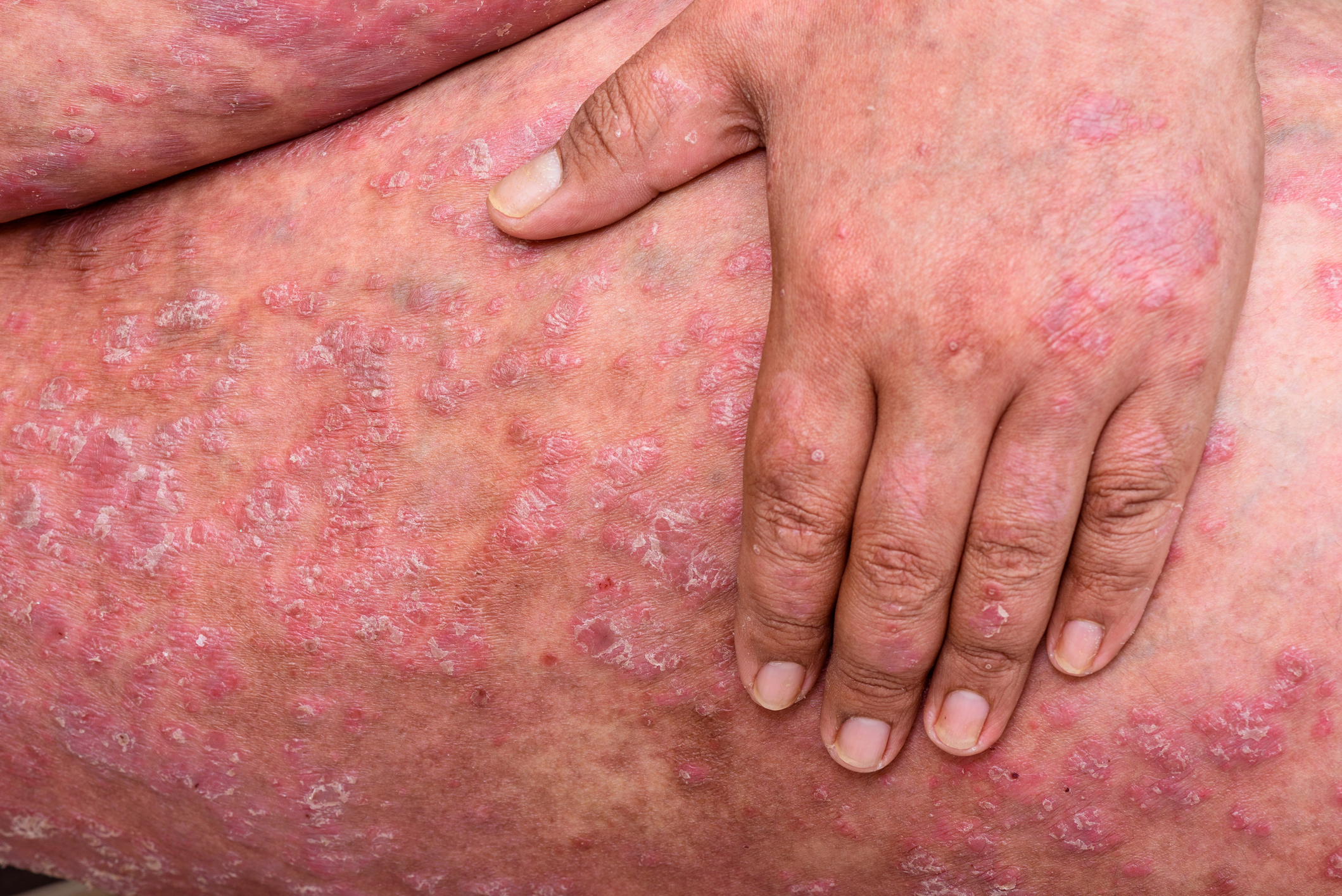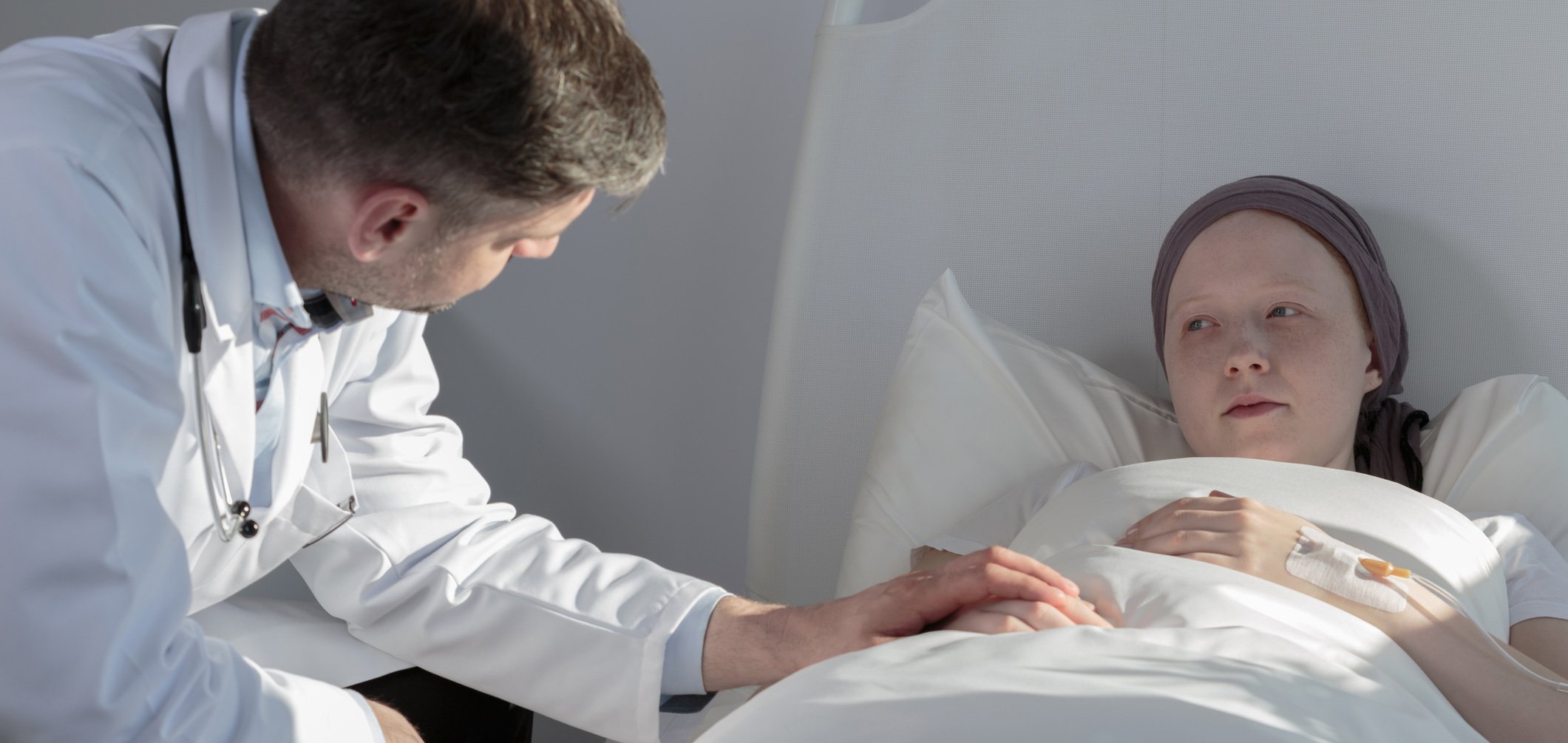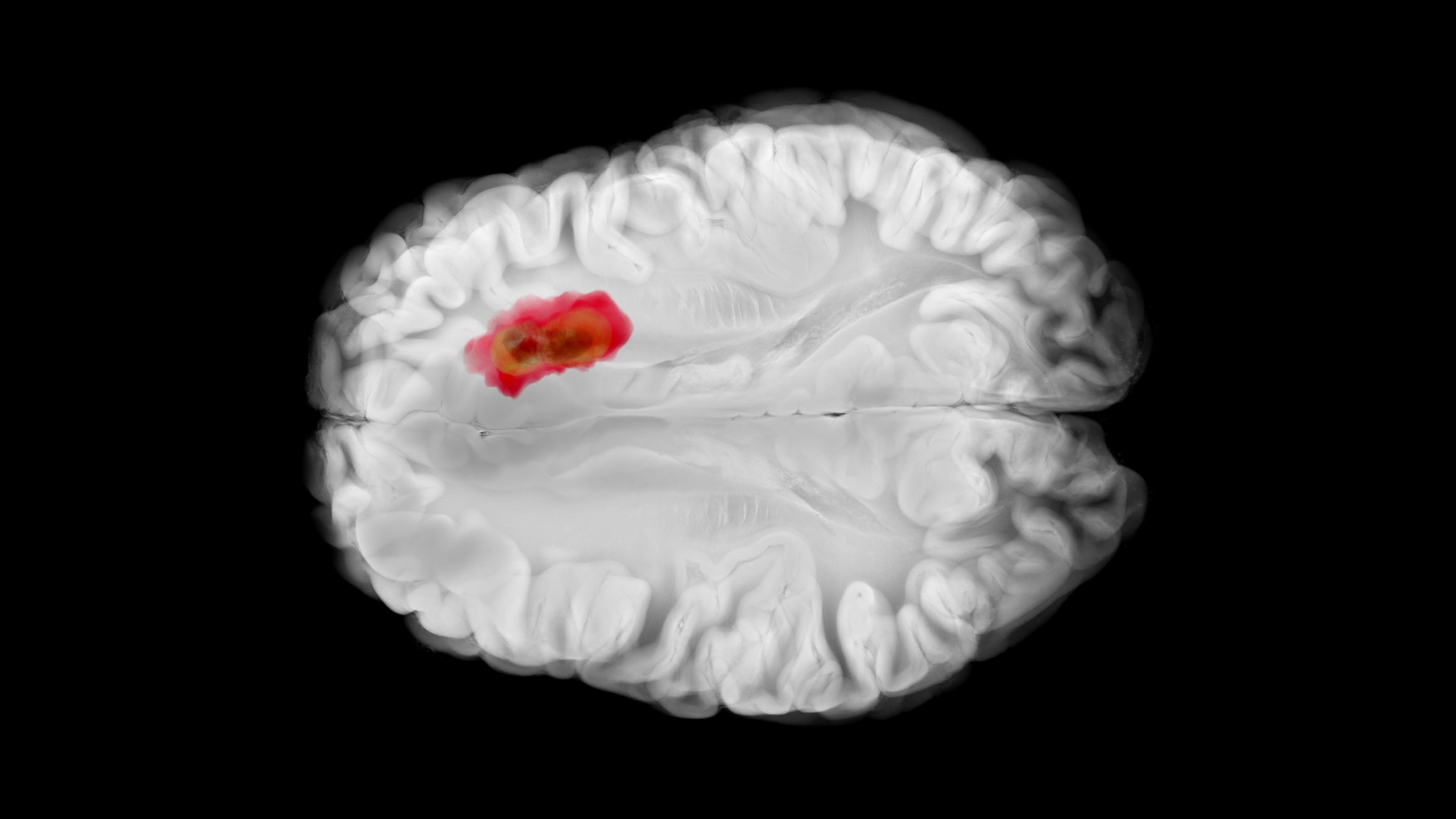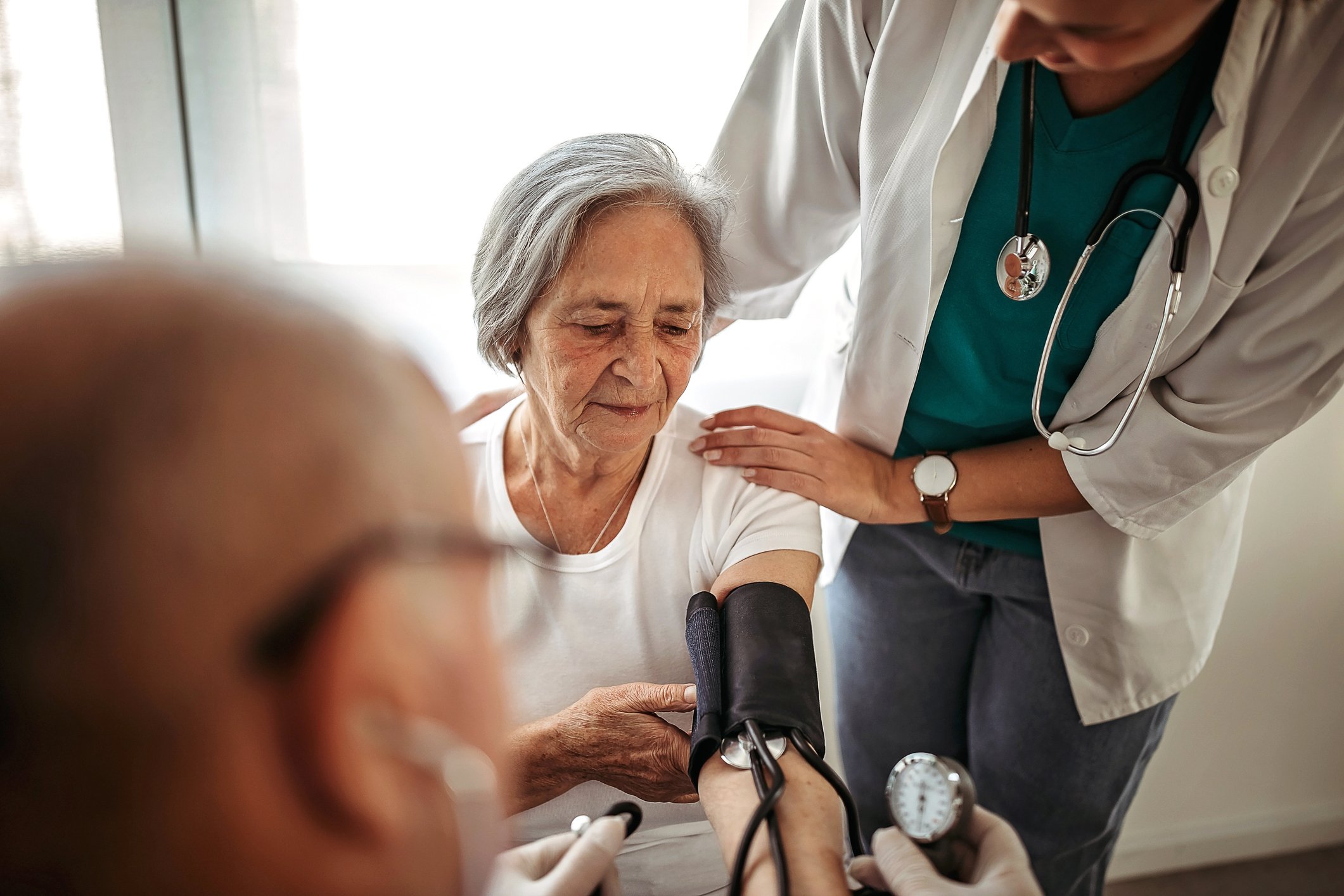Keratosis Follicularis Spinulosa Decalvans, also known as Siemens syndrome, is a rare genodermatosis that predominantly affects boys. The classic symptoms are diffuse follicular hyperkeratosis in conjunction with progressive scarring alopecia. Other symptoms may also occur in some patients. An interdisciplinary approach is required for holistic management.
The first description of Keratosis Follicularis Spinulosa Decalvans (KFSD) dates back to 1926 [1]. The majority of cases are X-linked recessive, but sporadic and autosomal dominant cases of KFSD have also been reported [2]. X-linked inheritance involves mutations in either the SAT1 gene or the MBTPS2 gene. To confirm the diagnosis of KFSD, histopathological analysis is often required in addition to genetic testing. The initial manifestation typically occurs in infancy or childhood in the form of keratotic papules, which first appear on the face and later spread to the trunk and limbs [2]. As the disease progresses, scarring alopecia develops, with eyebrows and eyelashes also being affected. Axial and genital areas also show hair loss [4]. Some patients develop associated symptoms such as photophobia and palmoplantar corneal dystrophy, and acne keloidalis nuchae has also been reported [5].
Histopathology led to the diagnosis
KFSD represents a diagnostic and therapeutic challenge, as was also shown in the present case of an 8-year-old patient [6].
Clinical features: The boy presented with inflammatory lesions on the scalp and alopecia. In addition, the patient showed diffuse hyperkeratotic papules distributed over the entire body surface, especially in the area of the limbs, cheeks and eyebrows. Neither facial dysmorphia nor photophobia was observed.
Diagnosis: The results of molecular genetic testing were inconclusive, but the suspected clinical diagnosis of KFSD was confirmed by histopathologic evaluation of a scalp biopsy.
Treatment: The patient was treated with systemically administered isotretinoin, topical clindamycin and emollients, which led to a reduction in perifollicular inflammation and a reduction in keratosis and stabilized the hair loss.
Comment: Histopathologically, it proved helpful to exclude differential diagnoses, which supported KFSD as the correct diagnosis, the diagnosis being based mainly on clinical features.
DD: IFAP syndrome and GLPLS
The most important differential diagnoses include ichthyosis follicularis alopecia photophobia (IFAP) syndrome and Graham-Little-Piccardi-Lasseur syndrome (GLPLS) [1]. IFAP syndrome is an allelic disorder with genotypic and phenotypic similarities to KFSD. Both are different phenotypic manifestations of a mutation in the MBTPS2 gene [7]. Clinically, both diseases are characterized by alopecia and follicular hyperkeratosis, whereby IFAP syndrome, in contrast to KFSD, is a non-scarring alopecia. In addition, ocular manifestations such as photophobia and corneal dystrophy are essential features of IFAP syndrome [8]. GLPLS is a variant of lichen planopilaris and is characterized by cicatricial alopecia of the head and non-cicatricial alopecia of the axillae and genital areas, accompanied by keratotic follicular papules distributed over the body. The differentiation from KFSD is mainly based on histopathology, especially as GLPLS has classic features of lichen planus [3].
The treatment of KFSD often proves to be difficult. Keratolytics and emollients are mainly used for topical treatment. Systemic retinoids such as isotretinoin have been shown to be helpful in the early stages of treatment by reducing follicular hyperkeratosis and inflammation [4]. Dapsone shows some efficacy due to inhibition of leukocyte chemotaxis and stabilization of lysosomal enzymes [9]. Other treatment options include antibiotics, as well as intralesional and topical steroids [9].
Congress: SGDV Annual Congress
Literature:
- Malvankar DD, Sacchidanand S: Keratosis Follicularis Spinulosa Decalvans: A Report of Three Cases. Int J Trichology 2015; 7(3): 125-128.
- Bellet JS, et al: Keratosis follicularis spinulosa decalvans in a family. JAAD 2008; 58: 499-502.
- Brar B, Khanna E, Mahajan BB: Graham little piccardi lasseur syndrome: A rare case report with concomitant hypertrophic lichen planus. Int J Trichology 2013; 5: 199-200.
- Sequeira FF, Jayaseelan E: Keratosis follicularis spinulosa decalvans in a female. Indian J Dermatol Venereol Leprol 2011; 77: 325-327.
- Janjua SA, et al: Keratosis follicularis spinulosa decalvans associated with acne keloidalis nuchae and tufted hair folliculitis. Am J Clin Dermatol 2008; 9: 137-140.
- Bianchetti L, et al: Case Report: Keratosis Follicularis Spinulosa Decalvans in an 8-year-old boy. Poster 111, SGDV Annual Congress, 18-20.09.2024.
- Aten E, et al: Keratosis follicularis spinulosa decalvans is caused by mutations in MBTPS2. Hum Mutat 2010; 31: 1125-1133.
- Alfadley A, et al: Two brothers with keratosis follicularis spinulosa decalvans. JAAD 2002;47: 275-278.
- Kunte C, Loeser C, Wolff H: Folliculitis spinulosa decalvans: Successful therapy with dapsone. JAAD 1998; 39: 891-893.
DERMATOLOGIE PRAXIS 2024; 34(6): 29 (published on 13.12.24, ahead of print)










